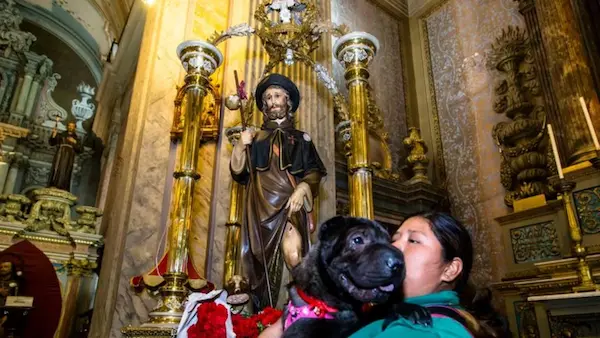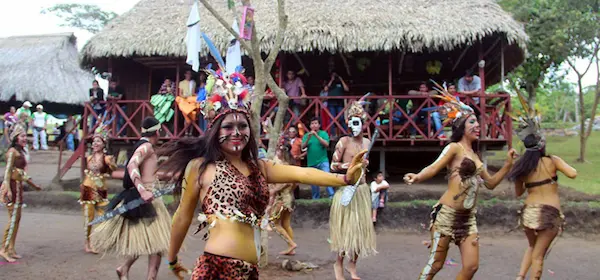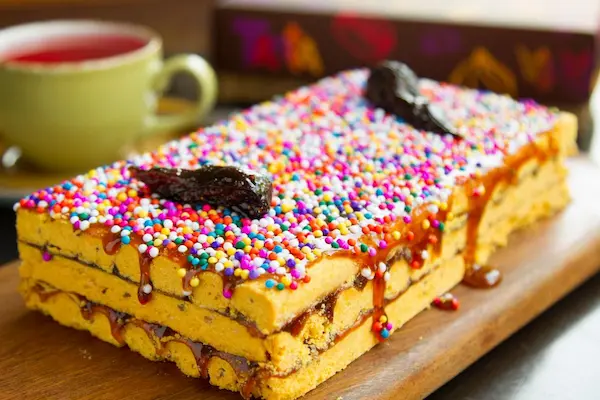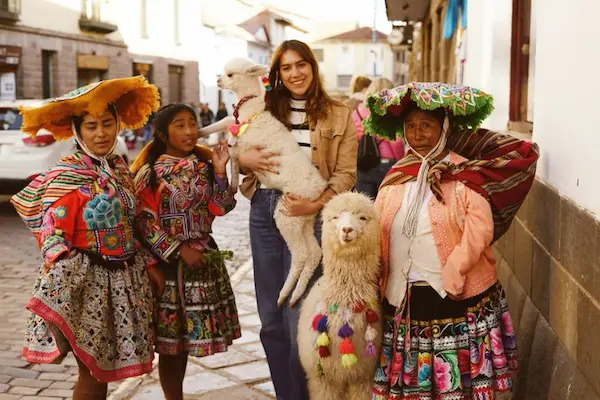August in Peru turns into a living, breathing celebration of Peru traditions. From snow-capped Andean peaks to the green expanses of the Amazon, you’ll find towns buzzing with music, color, and devotion. People gather to honor their saints, Pachamama (Mother Earth), or ancestral heritage with laughter, ritual, and deep cultural pride.
For travelers, August offers an authentic window into Peru’s soul. These aren’t tourist performances what unfolds is genuine life: heartfelt music passed down for generations, age-old recipes shared around community tables, and rituals rooted in everyday belief.
What Are Peru Traditions and Why Do They Attract So Many International Travelers?
Peru traditions grew born a rich mix of Indigenous customs, Spanish influence, and the blending of both through centuries. What makes them so moving is how alive they remain in modern times.
Chances are, if you’re traveling in August, you’ll wander into a local feast, prayer, or procession—some drawing crowds, others more intimate—but all giving you an unfiltered look at what Peru truly celebrates.
The Most Iconic Peruvian Traditions Celebrated in August
You may also like: Inti Raymi festival: Your guide to cusco’s most vibrant andean celebration

Feast of the Virgin of the Assumption
This celebration is celebrated in several departments, but especially in Cusco, Ayacucho, and Apurímac. Throughout the month of August, the streets are filled with flowers, music, and dancing. Families prepare traditional dishes, and people gather for processions and fairs.. If you happen to be there, you’ll feel the beautiful mix of devotion and community joy.
To get there, fly to Cusco or Ayacucho and take a local bus or moto-taxi to nearby towns. Pack warm and comfortable clothing the Andean climate is dry during the day but quite cold at night.
You might also like: 5 things to do in Lima: before your Andean trip

Saint Rose of Lima Day
Saint Rose of Lima has a special spot in the hearts of Peruvians. Every August 30, people gather at her sanctuary—especially in Lima—to leave handwritten notes brimming with hopes or thanks. It’s a simple yet deeply sincere tradition rooted in strong faith. You’ll see families, students, and even curious travelers waiting patiently in line, hoping their message will be heard.
But it’s not just a religious occasion. Around the sanctuary, small fairs spring to life, with food stalls, handmade crafts, and live music. The vibe is relaxed not over-the-top or noisy, but full of warmth and a genuine local feel. If you happen to be in Lima, it’s easy to get there by bus or taxi. The weather in August is usually cool, so a light sweater should be enough to keep you comfortable.

San Roque Festival
From August 14 to 17, the city of Cajamarca hosts this vibrant festival. The highlight is the “Entrada de San Roque,” a colorful parade of dancers and musicians honoring the saint. You’ll also get to taste northern Peru’s flavorful dishes like fried guinea pig, tamales, and crispy pork (chicharrón).
Fly or take a bus to Cajamarca. Bring transitional clothing for daytime walks and a warm coat for the cool highland nights.

Tarapoto Tourism Week
In the jungle region, Tarapoto organizes concerts, food fairs, and eco-cultural events during its Tourism Week. It’s an energetic time to experience Amazonian culture, food, and natural beauty while discovering Peru traditions rooted in the rainforest.
You can get to Tarapoto on a short flight from Lima. Don’t forget to pack light clothing, sunscreen, mosquito repellent, and sandals the Amazon is hot and humid.

Andean Traditions in Highland Communities (Puno, Cusco, Apurímac)
In many Andean communities, August is the time to give thanks to Pachamama (Mother Earth). During this time, offerings of coca leaves, flowers, and certain foods are made to pray for good health, rain, and harvests. These rituals are sacred and powerful. Some travelers may observe them or participate respectfully.
To reach the area, a local guide is generally required; most tours depart from Cusco or Puno. Since the region is at high altitude and the weather can change rapidly, it is advisable to bring warm clothing, gloves, sturdy hiking boots, a hat, and sunscreen. It is better to be well prepared than to be surprised by the cold or the sun.
Also read: 10 Traditional Dances of Peru You Need to Know

Traditional Dances and Music Throughout August
You’ll see traditional dances all over the place throughout the month—at schools, local fairs, even in the middle of the street sometimes. The marinera? It’s elegant but kind of playful. Huayno hits differently, more emotional, with that deep Andean rhythm. Then there’s the saya—full of energy and Afro-Andean vibes that really get the crowd going.
People wear super colorful outfits, the music’s always live, and the whole thing feels alive, not like a performance, more like a celebration. If you’re hanging around, don’t be surprised if someone drags you in to dance. That’s how you really feel what Peru traditions are about—not by watching, but by being part of it.
You may also like: Peru National drink

August Flavors: Festive Cuisine and Regional Dishes
As with any Peruvian celebration, food plays a central role. August’s regional dishes highlight Peru’s diverse flavors:
- In Ayacucho: puca picante and pork chicharrón.
- In Cusco: chiri uchu, a ceremonial cold dish.
- In the jungle: juanes and tacachos with cecina.
- In Lima: causa limeña, turrón, and pisco sour.

How to Experience These Traditions During Your August Trip
If you’re traveling to Peru in August, try to go beyond the usual tourist route. Ask locals at your hotel, in markets, or even your taxi driver about nearby festivities. Most will gladly share tips or stories.
Travel with an open mind and heart be ready to listen, taste, and feel. That’s the best way to experience the real Peru.
